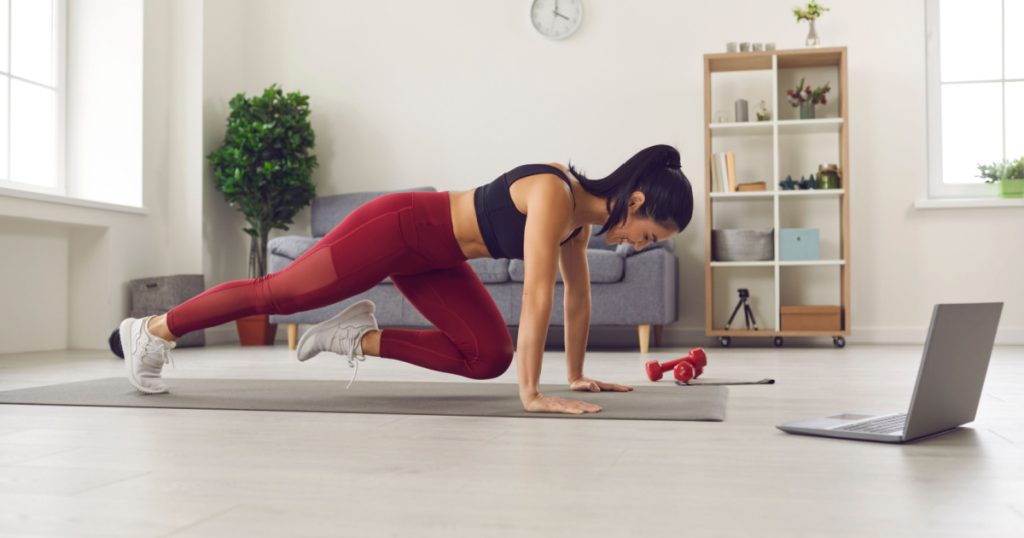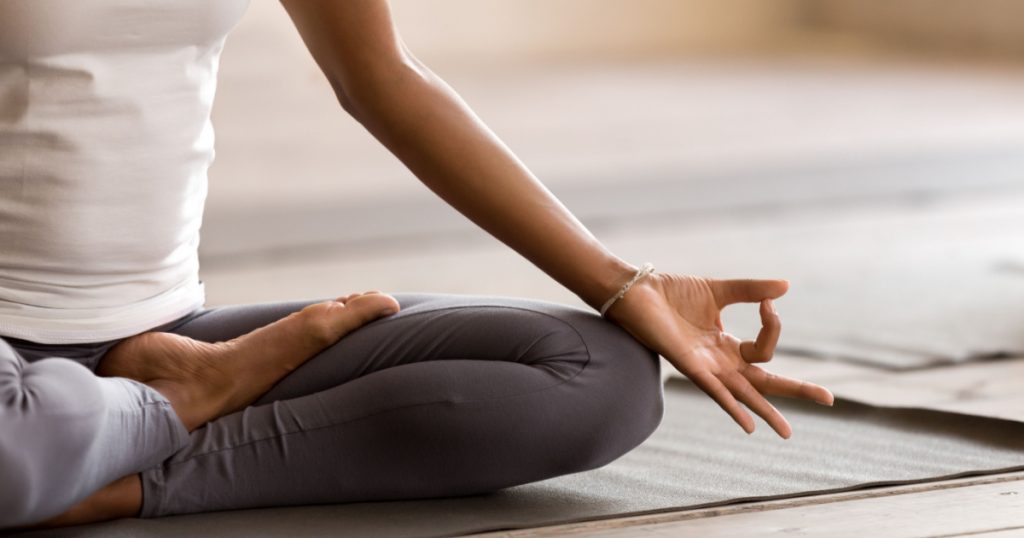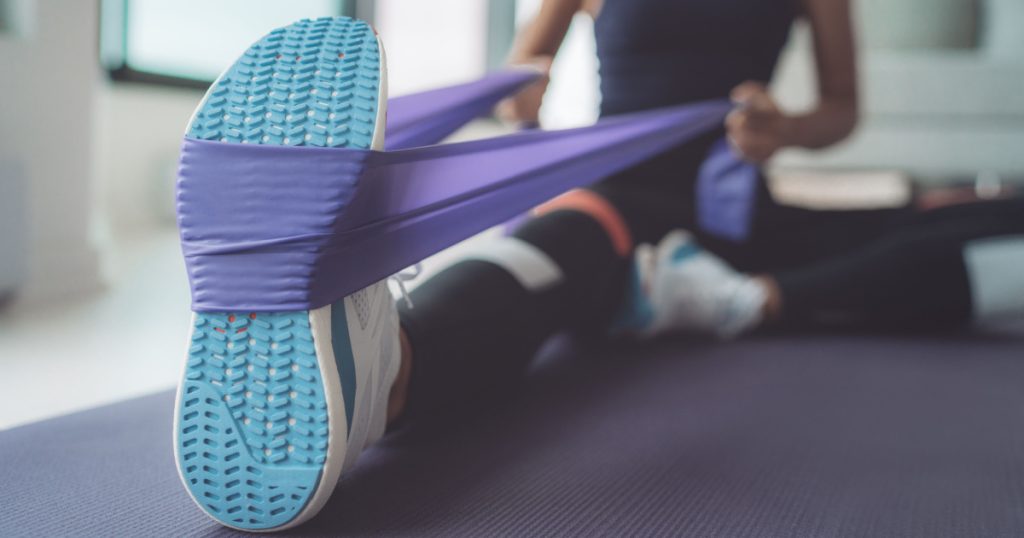Discover Three Easy Exercises to Lower Blood Pressure Immediately
In the United States, almost 1 out of every 2 adults has high blood pressure (hypertension). Meanwhile, only about a quarter of them have their blood pressure under control. It is important to find effective ways to control blood pressure.
Exercise can combat high blood pressure. This doesn’t mean you need a personal trainer or high-intensity interval training. There are many basic exercises that can help lower blood pressure levels. Let’s talk about them.

Master your heart health now
Take part in our 60sec quiz and get a heart health plan tailored just for you.
Contents
Exercise 1: Aerobic Activities

To reduce blood pressure levels after exercise, aerobic exercises are a great choice. Plus, regular exercise is an essential component of a healthy lifestyle and overall fitness.
How does exercise lower blood pressure? Regular aerobic exercise makes your heart pump blood out better and improves blood circulation through the blood vessels. This can help with reducing blood vessel stiffness that can predispose to high blood pressure.
Start managing your heart health now!
Find out what works for you with this 60sec quiz.

Brisk walking or jogging
It’s been established that brisk walking can reduce high blood pressure, and the same applies to jogging.
These can easily be integrated into your daily workout routine. Here are some tips:
- If you’re not used to working out, begin with regular walking.
- Find a convenient time every day.
- Aim for 150 minutes of exercise each week.
- If possible, get a partner to go on walks with.
Make sure that you maintain proper form. This will keep any discomfort away. Here are some tips:
- Keep your back as upright as possible. Don’t hunch over.
- Allow your arms to move from the shoulders. Don’t lock or stiffen up.
- Don’t stomp. You might hit the ground with some force when jogging, but your impact shouldn’t be too heavy.
Cycling or swimming
Aiming for a significant reduction in your body weight? Swimming and cycling are two of the best exercises.
Swimming can lower high blood pressure, as a study showed in adults over the age of 50 with hypertension. Cycling has a similar effect when trying to reduce high blood pressure and is even considered to be superior to walking in this regard and for weight management.
You can start with these activities on weekends, and if possible, increase the frequency into the week.
However, always make sure that you take the right precautions by wearing the appropriate safety gear when cycling, making sure you have water for hydration, and warming up properly before you begin.
Exercise 2: Yoga and Meditation

Yoga and meditation are known to be effective when it comes to lowering blood pressure. They are great for getting rid of stress, which is known to increase blood pressure.
A forward fold (uttanasana) is a good place to start:
- Breathe in, and as you do, raise your arms at your sides and then continue until they are pointing up.
- Breathe out, and as you do, bring your arms down in front of you.
- Fold your upper body slowly, as if with gravity and as if you are trying to touch your toes. You can bend your knees a bit, especially on your first few attempts. Then try to keep straight knees as you get into it more.
- As your hands approach the ground, put them on the ground, on your ankles, or on your feet.
To use meditation to lower blood pressure, sitting meditation is an option you can do anywhere:
- Find a quiet, comfortable place to sit.
- Sit with your feet on the ground and your back straight. Make sure you feel relaxed.
- Breathe through your nose, and as you do, be mindful of the air that you are taking in and breathing out.
- Forget all sensations outside of your breathing.
Yoga and meditation can become daily routines for you. With meditation, 15 minutes can be sufficient, and with yoga, try to aim for about 30 minutes.
Start managing your heart health now!
Find out what works for you with this 60sec quiz.

Exercise 3: Resistance Training

Resistance training (or weight training or strength training) involves moving the muscles against resistance, which is usually used to build muscle mass. It’s also great that it can help lower blood pressure.
There are many great strength training exercises, including:
- Pushups:
- From a kneeling position, extend your upper body forward, using your hands to support yourself. Get into a position where your arms are straight, and your hands are right below your shoulders.
- Extend your legs until you’re balancing on your toes and the balls of your feet.
- Your body should be straight. Don’t hunch your back.
- Using your arms to control the motion and your elbows pointing out and back, slowly descend until your chest is basically touching the ground.
- Now, use explosive force from your arms to push into the starting position.
- How many you do depends on your strength, but attempt to do five pushups in two sets at least three times a week. Build up from there.
- Squats:
- Stand with your feet shoulder-width apart.
- Stretch your arms out in front of you.
- Bend your knees to descend and bring your body into a squatting position.
- Using your legs, push back up into a standing position.
- You can start with 10 reps in 3 sets, 3 times a week, and build up from there.
- Dumbbell curls:
- Hold a comfortable weight dumbbell in each hand while standing with your arms by your sides.
- With the palm-side of your hand facing forward, bend your arm at the elbow to bring the dumbbell toward your chest and shoulder. Your upper arm should remain stationary.
- Alternate between arms. Do 10 to 15 reps in 3 sets, 3 times a week.
Additional Lifestyle Tips for Lowering Blood Pressure

Besides exercises to lower blood pressure, other lifestyle changes can manage high blood pressure and keep heart disease away.
- Stick to a healthy diet. There are many nutrients and foods that lower your blood pressure and help with weight loss. Try to get more of the following in your diet:
- Fruits
- Vegetables
- Whole grains
- Healthy fats (monounsaturated fats)
- Skinless poultry and fish
- Nuts and seeds
- Low-fat dairy products instead of regular dairy
- Plan your meals well. Taking care of health problems by sticking to a diet can be quite difficult at times. Planning meals can make it easier. Cooking and storing your food for the week, called meal prep, can make it easy to maintain healthy portions.
- Manage stressors well. Work, school, and daily life can be stressful. Several studies have been able to show how this can increase blood pressure. You can reduce stress with meditation, hobbies, and aerobic and weight training exercises to lower blood pressure.
Controlling blood pressure with physical activity and healthy eating can be made easier thanks to apps like the Cardi Health app. It can provide a personalized meal plan and the best exercises for your goals and can help you track your blood pressure over time.
Start managing your heart health now!
Find out what works for you with this 60sec quiz.

FAQ
How does aerobic exercise help reduce blood pressure?
Regular aerobic exercise enhances heart efficiency and blood circulation, leading to reduced blood vessel stiffness, a factor in high blood pressure.
Are brisk walking and jogging effective for blood pressure management?
Yes, both brisk walking and jogging have been shown to help reduce high blood pressure.
Can yoga and meditation aid in blood pressure control?
Absolutely. Yoga and meditation are known to alleviate stress, a common cause of elevated blood pressure.
Is strength training beneficial for blood pressure?
Yes, resistance or strength training can be an effective way to lower blood pressure over time.
Conclusion
You can lower your blood pressure effectively by engaging in aerobic workouts, doing yoga and meditating, and doing weight training. You can stay active with several sessions a week, and thankfully, there’s a wide range of options you can choose from, even as a beginner.
Keeping your blood pressure under control is extremely important for your health, and the Cardi Health app can make this so much easier for you by providing personalized recommendations and allowing you to track your systolic blood pressure and diastolic blood pressure trends.
Related articles
Best Foods to Lower Cholesterol
Does Caffeine Raise Blood Pressure?
Does Drinking Water Lower Blood Pressure?
Causes of High Blood Pressure at Night
10 DASH Diet Breakfasts for a Healthy Start
Heart-Healthy Diet Guide
What Should an 85-Year-Old Blood Pressure Be?
What is Normal Blood Pressure for a 70-Year-Old?
How to Read Blood Pressure: A Comprehensive Guide
Manage your heart health now
Find out what works best for you with this 60sec quiz and get your personalized heart health plan.

